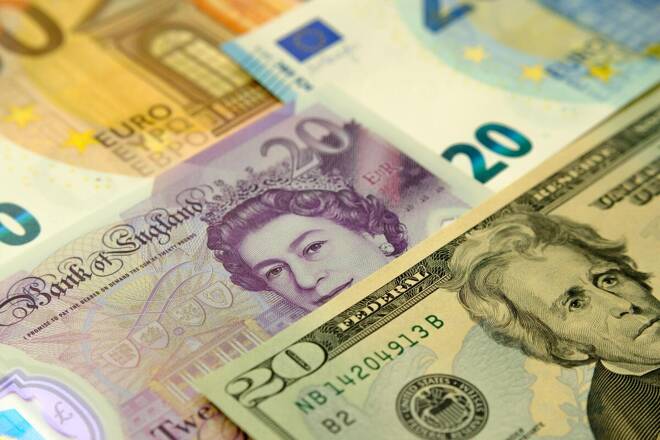Advertisement
Advertisement
GBP to USD Forecast: Cable’s Decline Highlights Mounting UK Economic Woes
By:
The British Pound feels the weight of grim services PMI, highlighting a contrasting economic and monetary policy environment in favor of the dollar.
Highlights
- GBP to USD ended the Tuesday session at $1.21576 amidst economic uncertainty.
- Short-term forecasts show GBP/USD remains defensive due to economic and policy divergence.
- US core durable goods orders forecasts reflect steady demand, supporting the hawkish Fed stance.
Overview of the Tuesday Session
On Tuesday, the GBP to USD pair declined by 0.44%. Following a 0.19% loss on Monday, the GBP/USD pair ended the session at $1.21576. A choppy session saw the GBP/USD strike a high of $1.22156 before falling to a session low of $1.21521.
Pre-UK GDP Jitters to Test Buyer Appetite for the Pound
The GBP/USD pair extended the losing streak to five sessions on Tuesday. A lack of economic indicators and BoE commentary left the GBP/USD on the back foot. Signals of a likely slump in UK consumption and service sector activity fueled fears of a prolonged UK recession.
The deteriorating macroeconomic outlook aligns with the BoE plans to maintain current policy without further tightening.
Investors must wait until Friday to receive the second quarter GDP numbers. However, the numbers may not change the negative sentiment toward the UK economic outlook.
The UK services sector contracted at a more marked pace in September. With the services sector accounting for over 75% of UK GDP, the services PMI numbers paint a grim picture. In June, the services PMI stood at 53.7 versus 47.2 in September.
A lack of confidence in the UK economy would impact consumer spending. UK Private consumption contributes over 60% to UK GDP. A softer inflation rate and an end to the BoE policy tightening cycle may not be enough for an immediate surge in consumption. Uncertainty toward the economic outlook will likely linger over the near term.
US Core Durable Goods in Focus
Later today, US core durable goods orders for August will draw interest. Economists forecast a 0.1% increase, following a 0.5% rise in July. The numbers will provide a view of the demand for US goods. However, the figures will unlikely force the Fed to deviate from the hawkish interest rate path.
The manufacturing sector accounts for about 20% of US GDP. Investors will likely continue to focus on labor market conditions, wage growth, consumption, and inflation.
On Friday, inflation and personal spending figures could prove pivotal for dollar dominance ahead of the US jobs report.
Short-Term Forecast
The GBP/USD pair remains on the defensive. Economic and monetary policy divergence tilt in favor of the dollar. Fears of a UK recession and risk-off sentiment stemming from China add further pressure on the GBP/USD. The GBP/USD may return to $1.2050 without a shift in market sentiment toward the UK economy.
GBP to USD Price Action
Daily Chart
The GBP/USD pair sat below the 50-day and 200-day EMAs, sending bearish price signals. A fall to $1.21000 would bring the $1.19055 support level into play.
Better-than-expected US core durable goods orders and hawkish Fed comments would bring sub-$1.21 into view.
However, a GBP/USD break above the $1.22150 resistance level would support a move toward the $1.24410 resistance level and the EMAs.
The 14-period daily RSI reading of 19.52 indicates the GBP/USD pair in the oversold territory.
4-Hourly Chart
The GBP/USD remains below the 50-day and 200-day EMAs, reaffirming bearish price signals. A fall to $1.21000 would bring sub-$1.20 and the $1.19055 support level into play.
However, a break above the $1.22150 resistance level would support a move toward the 50-day EMA.
With a 21.08 reading on the 14-period 4-hourly RSI, the GBP/USD remains deep within the oversold territory.
About the Author
Bob Masonauthor
With over 28 years of experience in the financial industry, Bob has worked with various global rating agencies and multinational banks. Currently he is covering currencies, commodities, alternative asset classes and global equities, focusing mostly on European and Asian markets.
Advertisement
